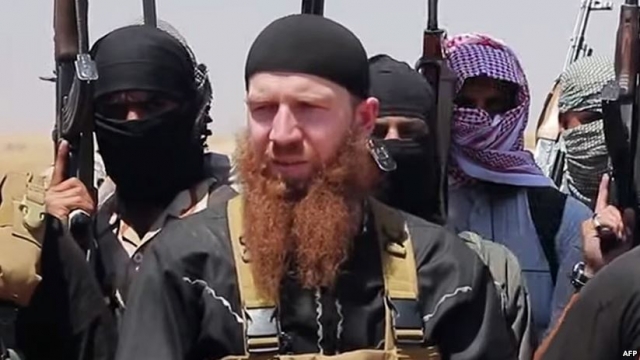Georgia’s Pankisi Gorge: More than 25 Years of External Manipulation
In response to Russian Foreign Minister Sergey Lavrov’s statement last month claiming there were ISIS training camps in Pankisi, the Georgian President and the US Ambassador went to Pankisi Gorge and held a joint press conference there to prove there were no training camps. President Margvelashvili, told those gathered: “I arrived here with ambassadors of the US and EU, as I want to show them a place and a people we are proud of.”
US Ambassador Ian Kelly followed with, “We are of course cooperating very closely with Georgia in the fight against terrorism, and I take their words at face value. There are no training camps for terrorists in the Pankisi Gorge.” This small press conference may not have seemed like a big deal, but this was a very positive development indicating that the current Georgian government is taking the situation in Pankisi Gorge seriously and that it has US support in doing so.
Moscow is very concerned about so-called Islamic State jihadists returning to its backyard from Syria and Iraq, as it very well should be. But the vast majority of these individuals are Chechens who were radicalized fighting the Russian government and are headed back to Russia’s North Caucasus, not to Georgia’s Pankisi Gorge.
A mall group of jihadists hailing from Pankisi did indeed make a name for themselves in Syria. The notorious Georgian Abu Omar al-Shishani (Tarkhan Batirashvili) has been “killed” at a rate of once every four months since his appointment as ISIS northern commander.
As for the total number of Georgians who have left Pankisi for Syria or Iraq, estimates vary from less than 100 to 200. There are no reports of them coming back. The notion that they are returning to wage war from Georgia or train others in Pankisi appears to be Kremlin propaganda to counter something else.
Georgia’s Pankisi Gorge grabbed attention because this little pocket of a tiny Christian country was so quickly and effectively radicalized. There was already a history of Chechen fighters in the area. Then the Saudis arrived with their contagious brand of Wahhabism toward the end of Saakashvili’s rule, when he was focused on Russia. By the time the current government established control it was too late. Pankisi extremism had spiked in a manner which appeared to mirror the rise of the Islamic State.
Abu Omar (Batirashvili), who had been trained by US intelligence and Special Forces, was proving extremely effective on the Syrian battlefield. As were a few of Georgia’s seasoned Chechen fighters from Pankisi, like Muslim Abu Walid al Shishani (Murad Margoshvili).
There is one bit of perspective that the Kremlin always omits when painting Georgia as unstable—a Kremlin pastime. The bulk of the Pankisi population consists of Chechens who were chased out of Chechnya by Putin in his rise to power. Pankisi is basically just a riverbed on the Georgian side of the Chechen border where about 10,000 Chechen Kists have gathered over time. It is not unusual that a Chechen population on one side of a valley would behave similar to the Chechens on the other, regardless of what border is between them. Hence, in the 1990s the area was a vast smuggling hub.
What is interesting though is that with the arrival of Saakashvili, Pankisi was transformed from that smuggling hub into a population of peaceful Sufi Kists, only then to have yet another younger generation radicalized by a combination of Russian aggression, weak Georgian governance, Saudi Wahhabi venom, and ISIS on the horizon.
Today things are a bit different. Videos of young ISIS recruits still appear, but now it seems that the Georgian government has actively and effectively engaged the Pankisi population. There are a number of new programs designed to quickly create jobs in the Pankisi area. The US ambassador’s recent visit is a bold gesture that should not be underscored.
But alarming are reports that the pathways back and forth between Pankisi and Chechnya are still active, despite what the Georgian, Russian and Chechen governments claim. It doesn’t matter what the Georgian government is doing to stop extremism- if even a few Chechen fighters are still able to cross into Georgia and then fly or drive to Turkey, as we know some have done in the past, then the Russian government will use this against Georgia. The same goes for any instance of Georgians crossing over to Chechnya to fight.
Still, Pankisi is better off today than it was several years ago, ironically because the extremists from Pankisi joining ISIS forced the Georgians, with US help, to face the problem and try to eliminate factors causing extremism. The same is not true for Chechnya, where an unhinged megalomaniac named Ramzan Kadyrov and his small corrupt posse are the only thing separating the Russian people from the Chechen fighters returning from Syria and Iraq.
Yet any progress in the Pankisi Gorge can be undone by the actions of a few more radicals. This means that the people of Pankisi will remain torn between neighboring powers and manipulated by far darker ones, unless they can become masters of their own fate.
Will Cathcart












